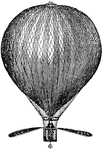Clipart tagged: ‘Flight’

Early Design Aeroplane
This is an early design of a future airplane, the landing apparatus features two sets of wheels.

Caproni Type C A-4 Triplane, 1915
This illustration shows three different views of the 1915 Caproni Type C A-4 Triplane.
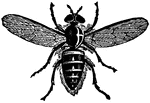
Common European Cleg (Gadfly)
The common European Cleg is a large, black/blue-black blood-sucking 'horsefly' of the family Tabanidae.…
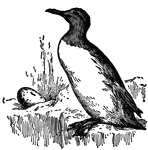
Common Guillemot
The Common Guillemot (Uria troile) is a member of the auk family. It breeds on all rocky coasts of the…
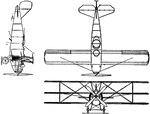
Curtis Model 18-I Triplane
This illustration shows three different views of the Curtis Model 18-I Triplane. It has a 400 horsepower…
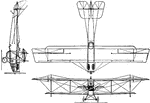
Curtis Model J N 4-B Military Tractor
This illustration shows three different views of the Curtis Model J N 4-B Military Tractor.
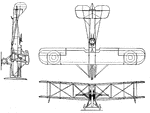
De Haviland 4 Reconnaissance Plane
This illustration shows three different views of the De Haviland 4 Reconnaissance Plane. This plane…

Farman Type F-60 Tourist Aerobus
This illustration shows three different views of the Farman Type F-60 Tourist Aerobus. This plane held…

Flying Fish
"The Flying fish, with wings expanded and elevated in the act of flight. This anomalous and interesting…
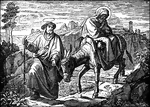
Joseph Leads Mary and Jesus on the Road to Egypt as They Flee from King Herod
"...behold, the angel of the Lord appeareth to Joseph in a dream, saying, Arise, and take the young…
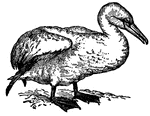
Gannet
Also known as a Solan Goose (Sula bassana), the Gannet is a large marine bird which nests in scattered…
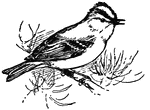
Golden-Crested Wren
Also known as the Kinglet, the Golden-Crested Wren (Regulus cristatus) is the smallest of European birds.…
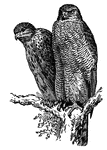
Goshawk
The Goshawk (Astur palumbarius) is a hawk abundant in the forest regions of northern Europe and Canada,…

Griffin
In heraldry, the griffin is a fabulous animal, with the head and forefeet of an eagle, and the body,…
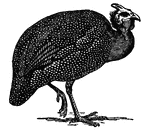
Guinea Fowl
Guinea Fowl are the African representatives of the pheasants, from which they differ in that the plumage…
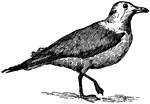
Kittiwake Gull
The Kittiwake gull (Rissa tridactyla) is a sea-gull characterized by the absence of the hind toe. It…
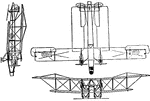
Handley-Page Twin Liberty Motored Type O 400 Bomber
This illustration shows three different views of a Handley-Page Twin Liberty Motored Type O 400 Bomber.

Hargrave Kite
These Hargrave box kites are named so after their inventor, Lawrence Hargrave of Sydney. These kites…
The Grey Heron
"The Grey Heron in full flight. In the heron the wings are deeply concave, and unusually large as compared…

Right Wing of Kestrel
"Right wing of the Kestrel, drawn from the specimen, while being held against the light."—Pettigrew,…

Eddy Tailless Kite
The Eddy Tailless Kite (named so after its inventor, Eddy of Bayonne), is a tailless kite. The convex…
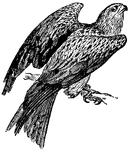
European Kite
European Kites are very miscellaneous feeders, but depend largely on offal, and in the eastern tropics…
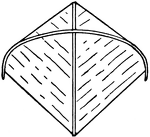
Java Kite
The tailless java kite resemble the kite used by Eddy of Bayonne, N.J. in 1890. This kite is tailess.

Northern Lapwing
"The Lapwing with one wing fully extended, and forming a long lever; the other being in a flexed condition…
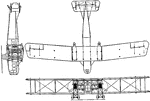
Lawson Type C-1 Twin Liberty Motored Aerial Transport
This illustration shows three different views of the Lawson Type C-1 Twin Liberty Motored Aerial Transport.

Satellite Sphinx Moth
"Philampelus satellitia, a large and handsome hawk-moth whose larva feeds upon the vine. Natural size.…

NC. 4 Flying Boat
This illustration shows three different views of the NC. 4 Flying Boat. It has a 1600 horsepower engine.

Red-Legged Partridge
"The red-legged partridge with wings fully extended as in rapid flight."—Pettigrew, 1874

The Pigeon
"The Pigeon flying downwards and turning prior to alighting. The pigeon expands its tail both in ascending…
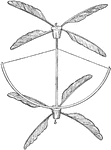
Cayley's Aerial Screw
A flying machine invented by George Cayley. It is an early model of the helicopter.


